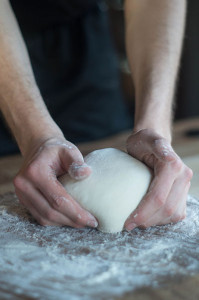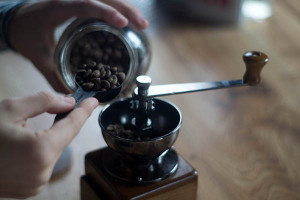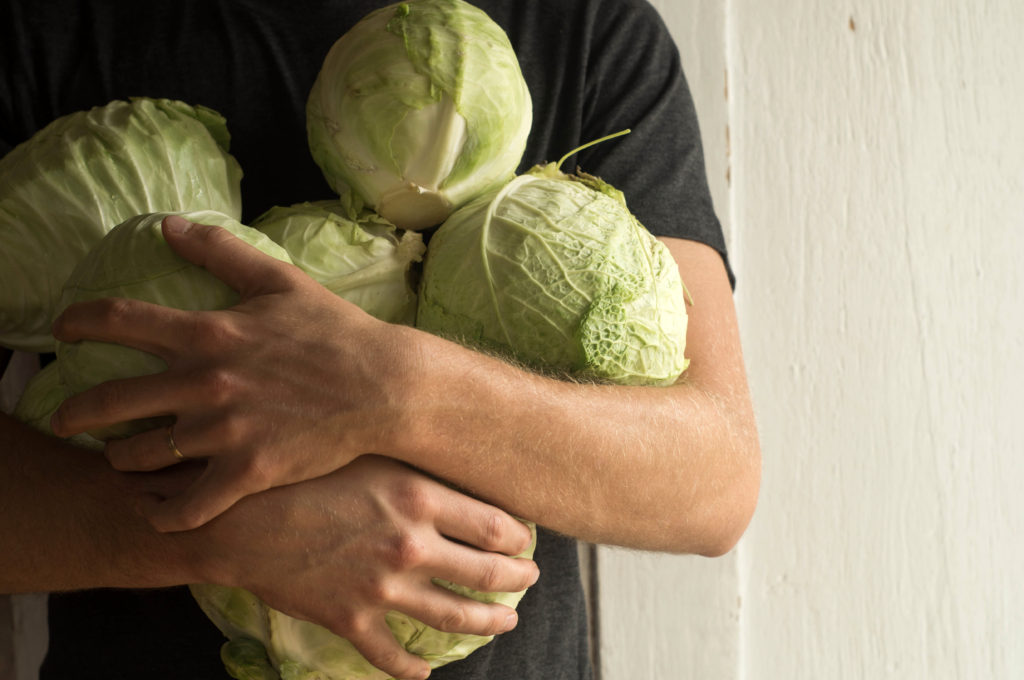
Taking the great leap into home fermentation can be an intimidating proposition. The prospect of throwing a bunch of vegetables into a container for weeks on end can be, well, disconcerting.
If you’ve left berries in your refrigerator too long, you know what fermented foods can look and smell like, and it’s not always pleasant. To a beginner like me, it is easy to become entangled in thoughts of a fermentation project gone wrong: mold, slime, harmful bacteria, and oh, the scents. That said, fermented foods have a long history for a reason, and acquainting myself with methods of old helped alleviate my fear. With a bit of due diligence in keeping a sanitary environment, it can actually be quite easy to produce a delicious, nutritive ferment at home. As with all things “first”, I did some things right, and some things that had me ruing the day I ever decided to make sauerkraut. Rather than a conclusive How-To post, here is a quick list of Things Learned Along the Way.
Note on the ferment: I made a 15-pound batch of basic sauerkraut (cabbage, salt, and caraway seed) in a 3-gallon water-sealed fermentation crock.
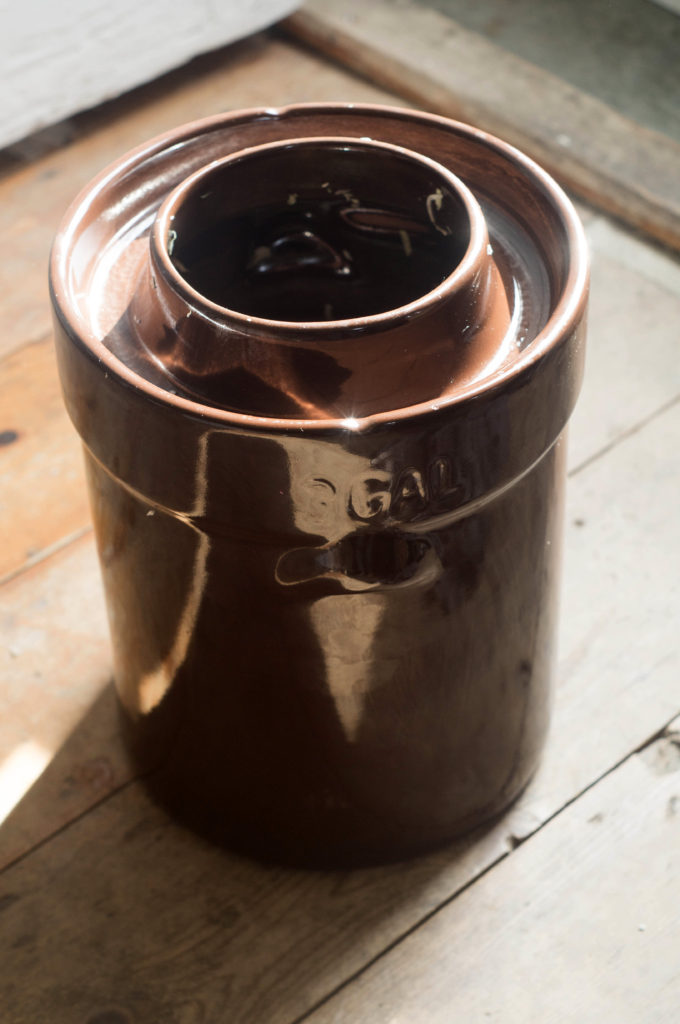
Water-sealed fermentation crocks are your friend.
While I am no expert when it comes to fermentation methods, I can speak to the consistency of the anaerobic (the absence of oxygen) environment created in a water-sealed crock. After much research, I landed on the water-sealed fermentation crock for its ease of use. After packing the crock and placing weights inside, the lid is placed into a moat, which is then filled in with water. The water creates an airtight seal that keeps oxygen out while allowing carbon dioxide gases to bubble out. Beautiful. Now that I am on the other side of a five-week fermentation project, I can say with confidence that the Lehman’s European-style Fermenting Crock is a gem.
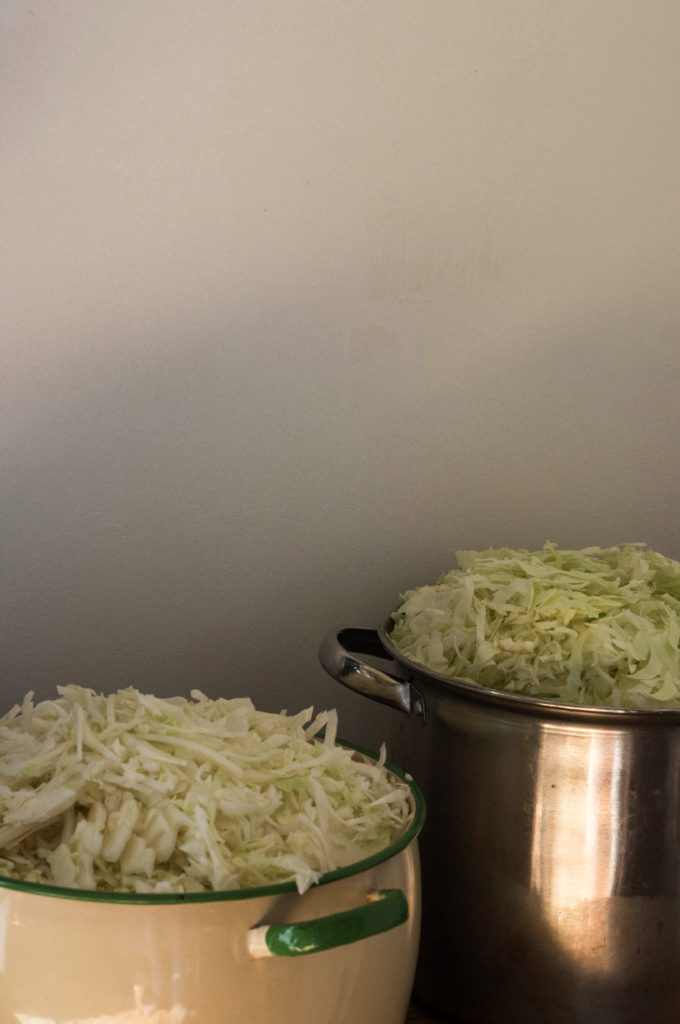
Prepare your ingredients in smaller portions.
For all the research I did on how to avoid mold (no air, got it) or spoilage (clean wooden spoons, check), I failed to do much research on how to efficiently pack the ferment into the crock. My wife and I made a mistake by mixing the salt and caraway seeds into an enormous bowl’s worth of shredded cabbage. We filled it to the brim. Fifteen pounds worth of cabbage becomes overwhelmingly cumbersome the moment you start trying to evenly distribute salt and spices. We painstakingly tried to avoid losing much cabbage to the floor, sacrificing our wits instead. Some research told us that preparing the salt with the cabbage in small batches — say, 5 pounds — makes quick work of a tedious step. Next time!
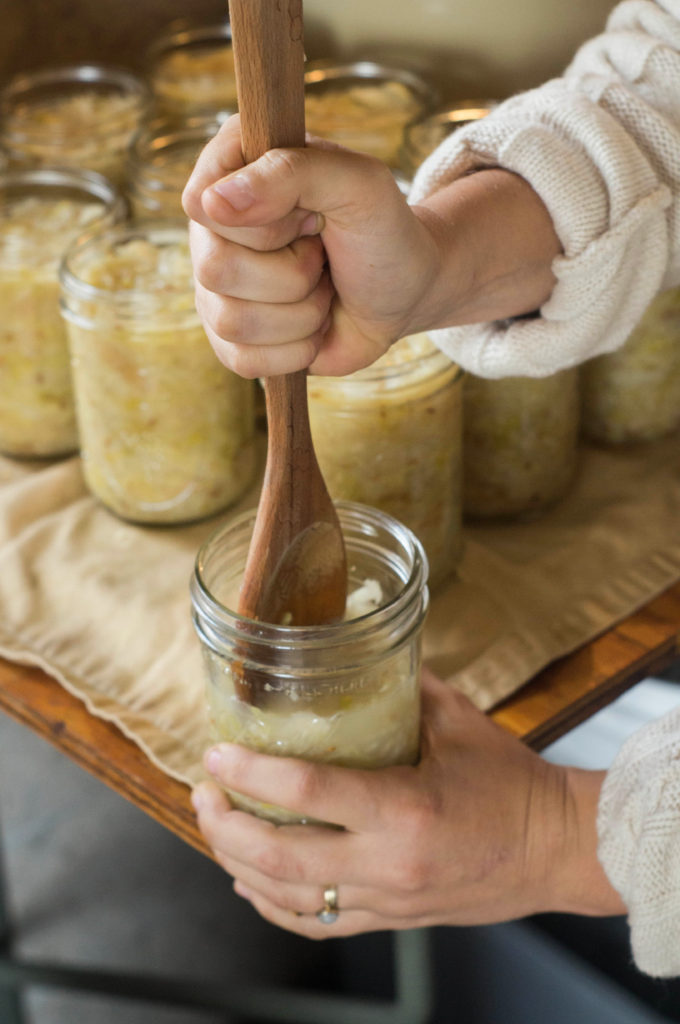
Pack as you go.
Similar to preparing ingredients in smaller batches, packing the ferment into the crock in layers is critical. By pounding the cabbage down, you are in effect encouraging the release of moisture from the cabbage. This becomes the anaerobic brine the cabbage needs to live in for the duration of the fermentation process. You need liquid to rise above the surface level of the cabbage. This is infinitely easier if you pack in layers.
Rookie mistake number two. We schlepped all fifteen pounds of cabbage into our crock at once, and consequently spent an hour packing it down. Our goal was to minimize the number of surfaces the cabbage came into contact with. This is what kept us from taking it out layer by layer. Say what you will about our approach, but most of all learn from our mistake! Your biceps will thank you. Also: a kraut pounder may be a worthy investment, considering we snapped a wooden spoon while we were at it!
Save a few large outer cabbage leaves.
Despite using heavy weights on top of the ferment to keep food bits from floating to the surface and potentially turning moldy (from exposure to oxygen), it still happens. This is especially likely when fermenting shredded food, like cabbage. Keep a few of the larger outer leaves from a head of cabbage. Once all of the food has been packed into the crock and before you place the weights in, first set the cabbage leaves down. Take care to submerge them fully in the brine. This serves as a trap for any would-be floaters.
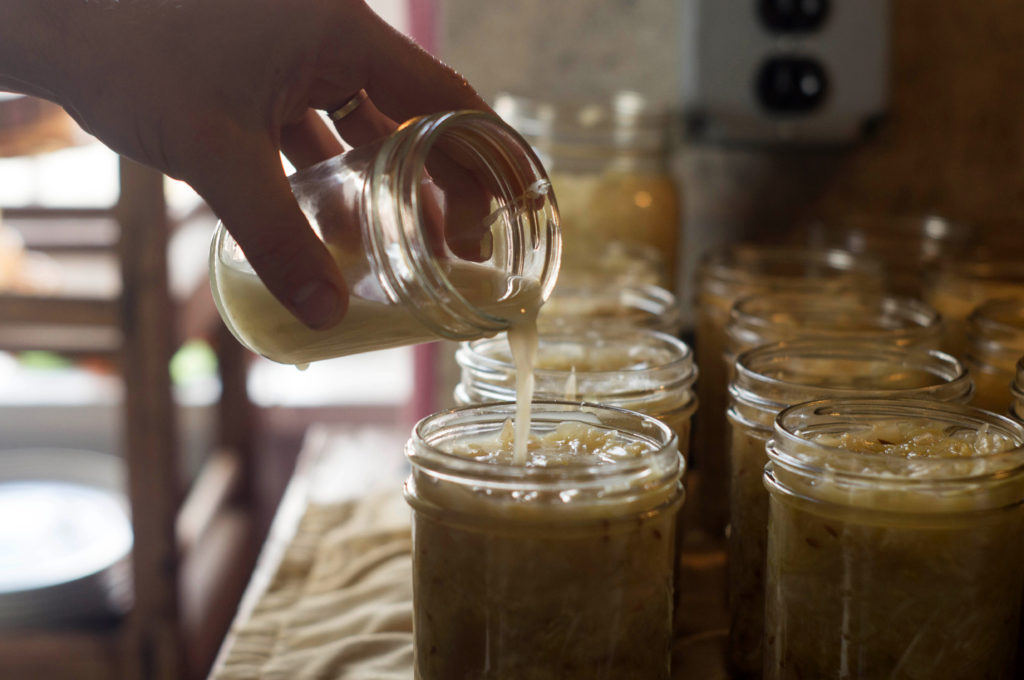
Out of sight, out of mind.
Disregard the active Cook in you, whose instinct is to check food for doneness. The key to fermenting food is to leave it alone, leave it alone some more, and then leave it alone a little bit longer. Avoiding agitation or the introduction of oxygen by opening the lid is important. Think of it as an exercise in patience.
The beauty of the Lehman’s European-style Fermenting Crock is that the stoneware means you cannot see into it anyway. This allowed me to ignore what was inside. Additionally, I left it in a corner of my kitchen that I don’t often visit. If you have more willpower than I, maybe you can set the beautiful crock in a place of pride, imagining the delicious reward awaiting within. Maybe you’re like me who feels the waiting is the hardest part. If that’s the case, trust in the old adage: out of sight, out of mind.
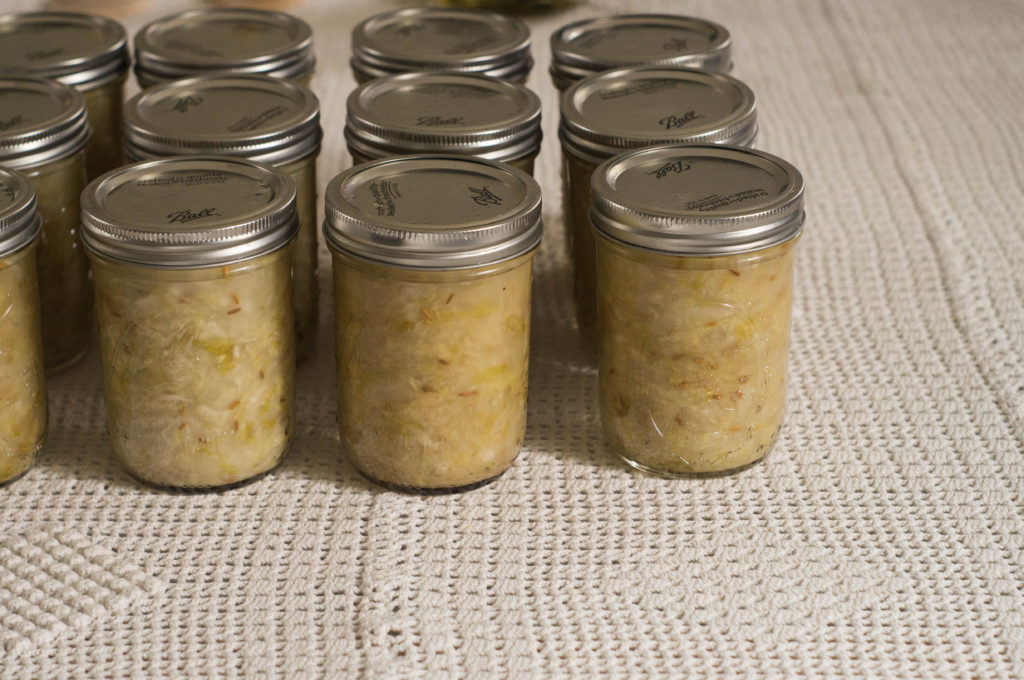
As with any first-time venture, mistakes were made and the process was far from perfect—but the fermentation was successful, nonetheless! Encouraging news for anyone new to fermenting foods, no doubt. Now, our sauerkraut coffers are full and ready to be parceled out as holiday gifts, and consumed slowly over the course of the winter ahead. So, in that spirit, one final lesson: don’t let the nerves get the best of you. Get fermenting!
Editor’s Note: Mark penned this post back in late fall 2016. He reports that he and wife Samantha are daily enjoying the results! It’s a good time to start planning for this coming season’s fermenting projects: find everything you need to get started or add to your fermenting supplies at https://www.lehmans.com/category/fermenting-pickling.


